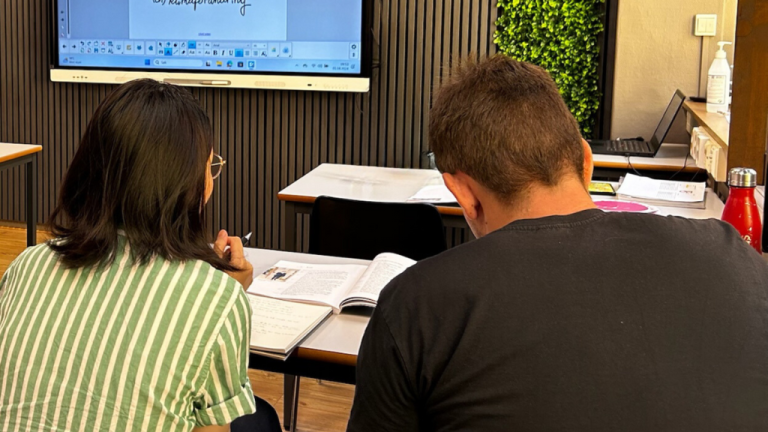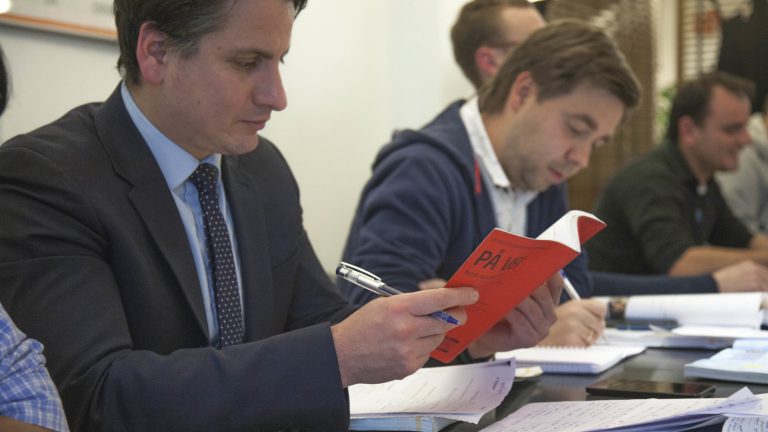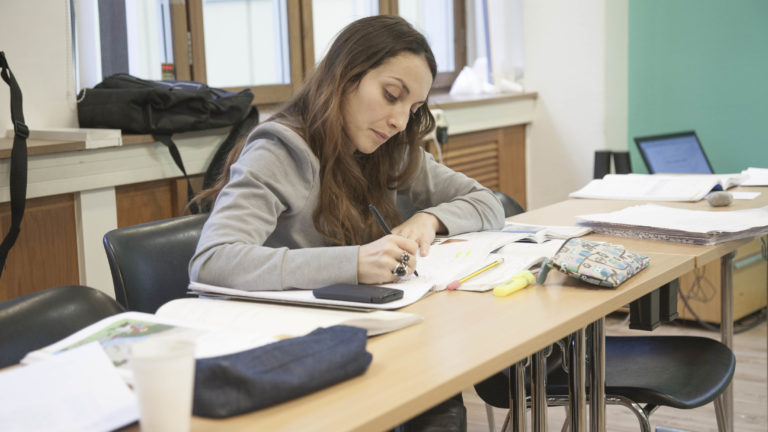The Norwegian Election Explained
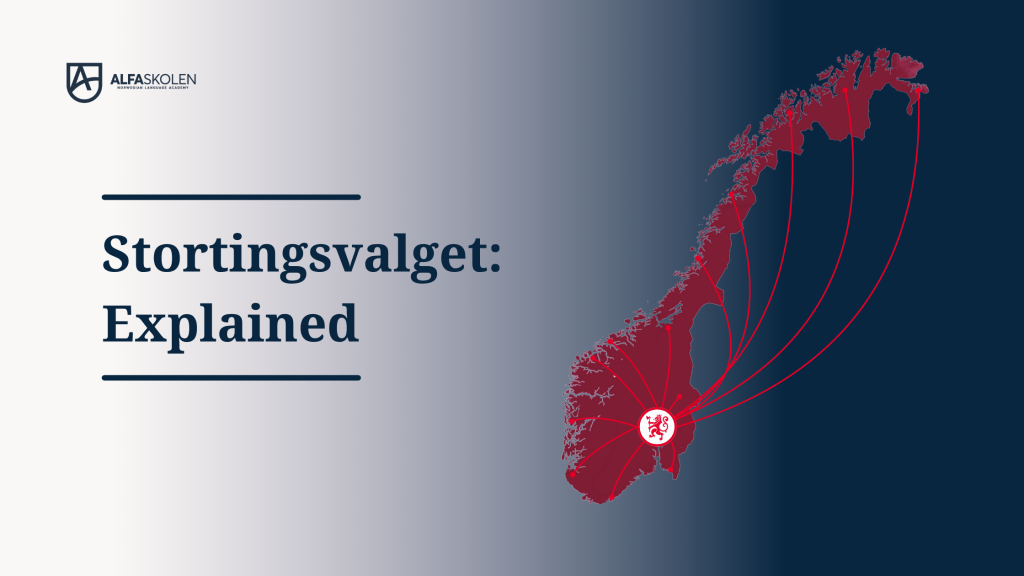
Your Guide to Norway’s Political System
Why Should You Understand the Parliamentary Election (Stortingsvalget)?
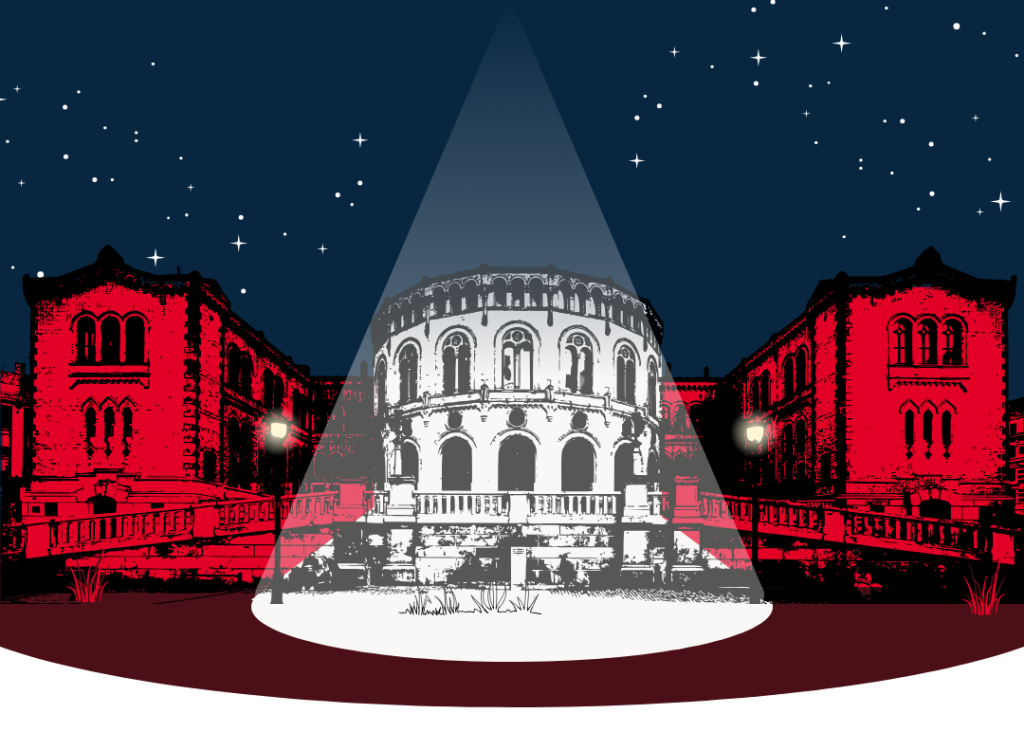
Are you planning to live, work, or study in Norway? Perhaps become a Norwegian citizen soon? Then the Parliamentary Election (Stortingsvalget) is the most important democratic process you need to be familiar with. The election determines who will govern Norway, which laws will be passed, and how society—and your daily life—is organized.
Taking part in society is about more than learning the language. It is about civic engagement (medborgerskap). In this guide, we go through everything you need to know about the election, from who can vote to what the major parties are fighting for. This knowledge is the key to understanding Norwegian debate, news, and social structures.
The Storting: Where Norway’s Laws Are Made
The Storting is Norway’s national assembly. Norway is divided into 19 constituencies, and each sends a certain number of representatives to the Storting. In total, 169 representatives are elected, ensuring that both large cities and small communities have influence in the national assembly. The representatives, who are individuals elected by the people to speak on behalf of the citizens, will pass laws, adopt the national budget, and deal with issues affecting the entire country, from schools and healthcare to climate and the economy. In this way, the Storting serves as an arena for democratic processes, where different opinions and interests meet.
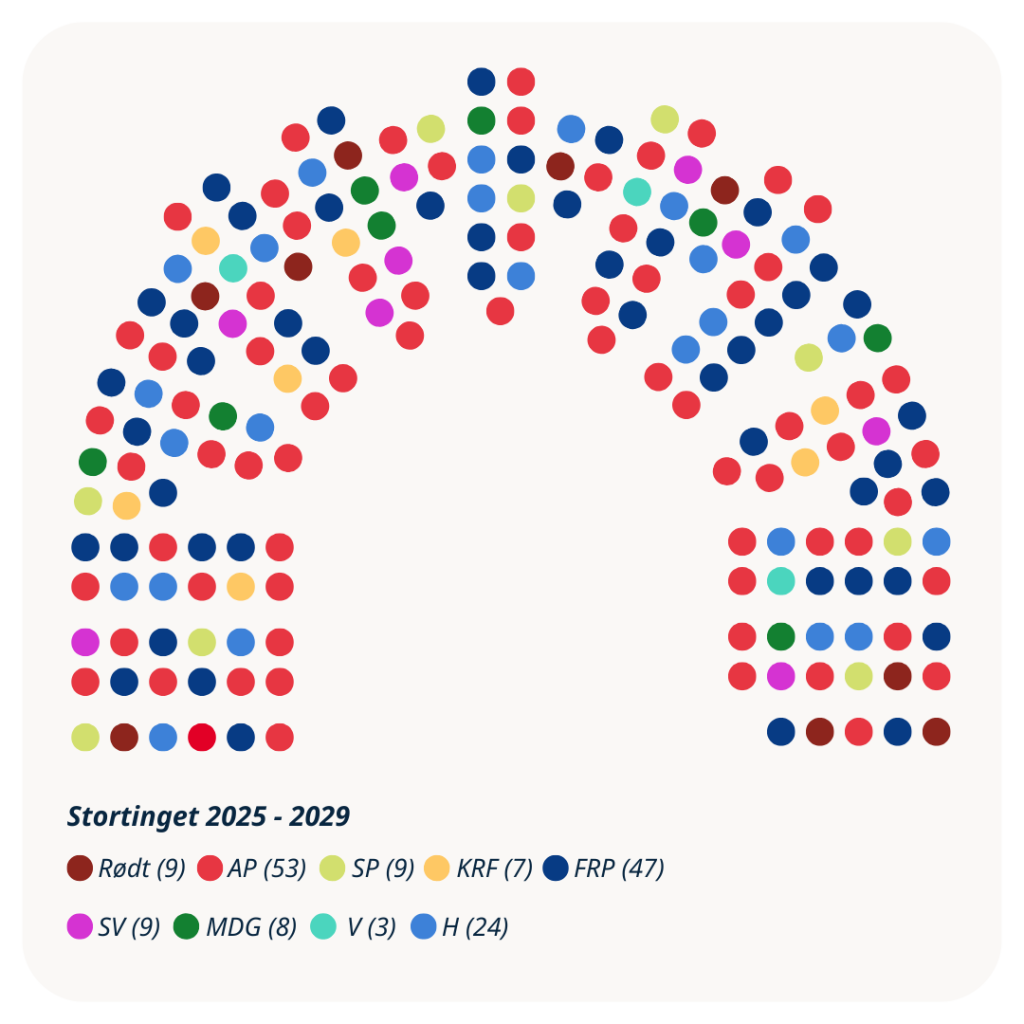
Fun fact about seating! In most parliaments, politicians are seated together by party (red on the left, blue on the right). In the Storting, it’s different: The parliamentary representatives are seated by county according to their electoral district and have fixed seats. Members of the Government sit in the front row, but only the Prime Minister has a fixed seat. This emphasizes the representatives’ responsibility to the regions they represent, regardless of party affiliation.
Who Has the Right to Vote, and When Is the Election?
Parliamentary elections are held every four years in September. The most recent election day was Monday, September 8, 2025. The right to vote apply to Norwegian citizens from the year they turn 18. All voters must show valid identification when voting, and votes are cast in secret. This ensures fairness and that all votes count equally – a fundamental part of a democratic society.
Why is it important to vote?
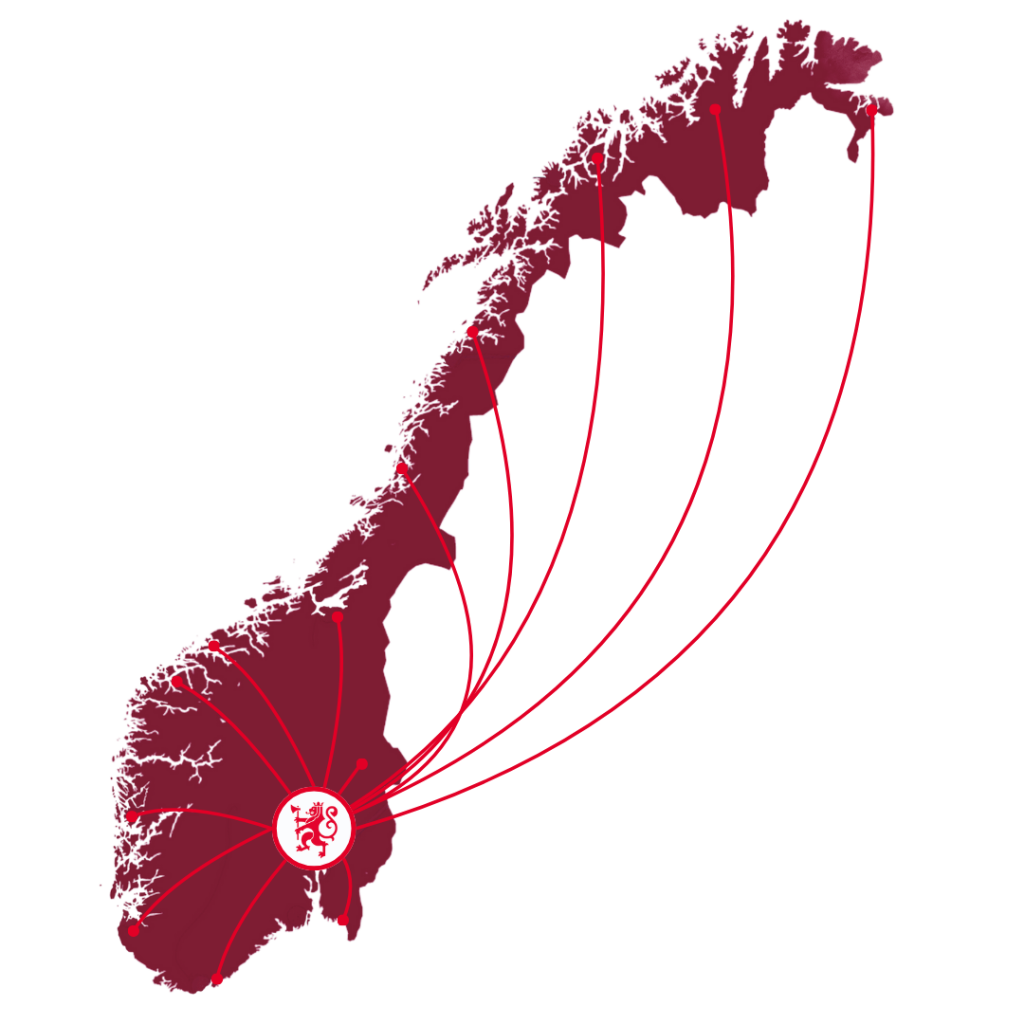
Voting is one of the most fundamental forms of participation in a democracy. Even though one vote may seem insignificant, elections are often decided by small margins, and every vote counts. Through voting, it is determined who governs the country, which laws are passed, and which issues are prioritized – from education and healthcare to the environment and working life. High voter turnout sends a clear signal to politicians about what the population wants, while low turnout can lead to decisions that do not reflect the majority’s interests. Voting is therefore both a right and part of the responsibility that comes with citizenship.
Who runs the nation? An overview of the parties
Norway has several political parties that represent different ideas and values.
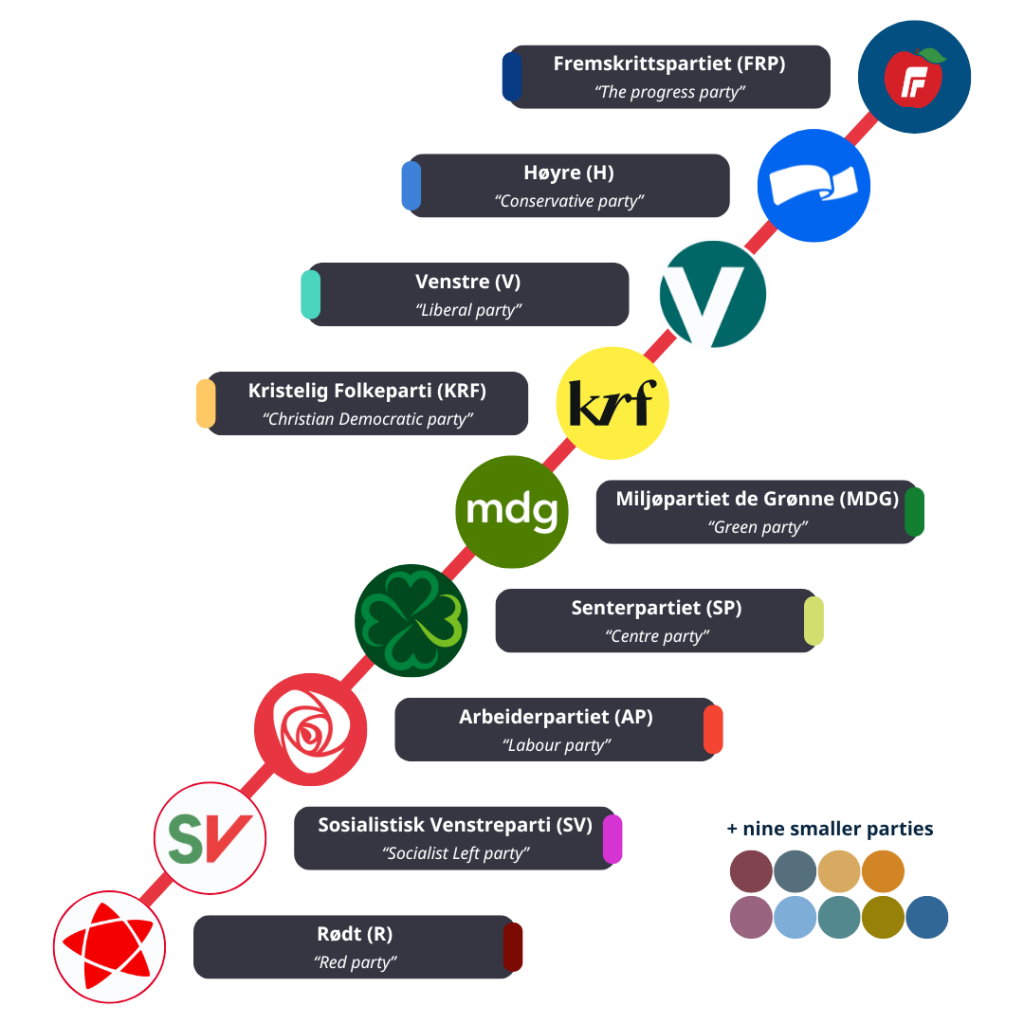
Above are some of the most well-known, and here are examples of what they typically advocate:
- Labour Party (Ap): Better schools, good hospitals, and welfare for all.
- Conservative Party (H): Private enterprise, lower taxes, and economic growth.
- Centre Party (Sp): Rural areas, agriculture, and small communities.
- Progress Party (FrP): Lower taxes and less state control.
- Liberal Party (V): Environmental measures, education, and support for small businesses.
- Socialist Left Party (SV): Welfare, environment, and climate.
- Christian Democratic Party (KrF): Family, healthcare, and Christian values.
- Red Party (R): Reducing inequality and strengthening rights for workers and ordinary people.
How is the nation run? From party to government
A government (regjering) is the group of politicians who manage the country’s daily administration and ensure that the decisions made by the Storting are put into practice. The government also presents proposals for the budget, which is a plan for how the state’s money should be allocated across areas such as healthcare, education, transport, and defense.
No single party usually holds a majority of the 169 seats, leading parties with similar goals to align into political blocks. The winning block (or the largest party) can choose to form a coalition government (samarbeidsregjering)—where multiple parties share cabinet positions—to secure a stronger base in Parliament. It is also possible for a single party to govern alone.
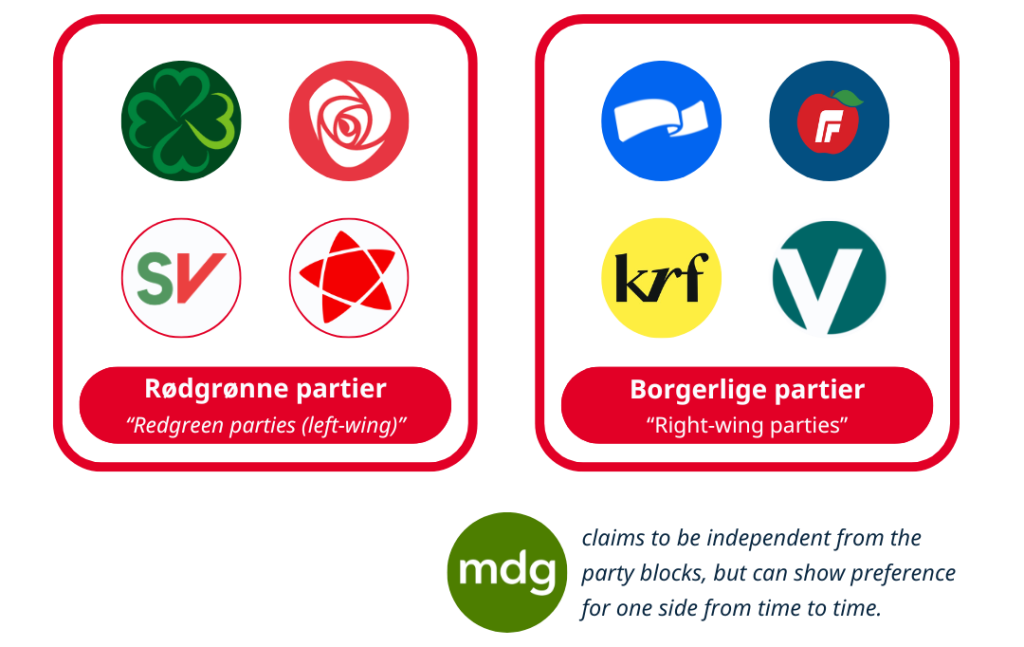
(For example: The government during the 2021–2025 parliamentary term began as a coalition between the Labour Party (Ap) and the Centre Party (Sp). When the Centre Party later withdrew, Ap continued alone as a minority government—meaning a government that holds fewer than 85 seats (out of 169) and must therefore seek support from other parties to pass its proposals.)
Are you curious how the Norwegian elections went in 2025?
The 2025 Election Result: Norwegian Politics in Motion
This year’s election in September 2025 was an exciting race that showed Norwegian voters wanted a clear change in direction. Which party won the government power?
The election was won by the Labour Party (Ap). The greatest tension lay in the race to become the country’s second-largest party, where the Progress Party (FrP) secured a strong second place. The Conservative Party (H), historically one of the two major parties, had one of its poorest election results in 20 years.
Much of the drama was tied to the electoral threshold (sperregrensen). The electoral threshold is an important four percent limit of the votes that entitles parties to equalization seats (utjevningsmandater)—extra seats in Parliament that ensure better national representation. Venstre just missed the threshold and lost many seats, while the Green Party (MDG) just managed to fight their way over. FrP’s advance can be seen in connection with a broader international wave of increased support for right-wing populist forces.
The result shows that Norwegian politics is dynamic and that small changes in vote counts can have major consequences for which issues are prioritized in Norway over the next four years.
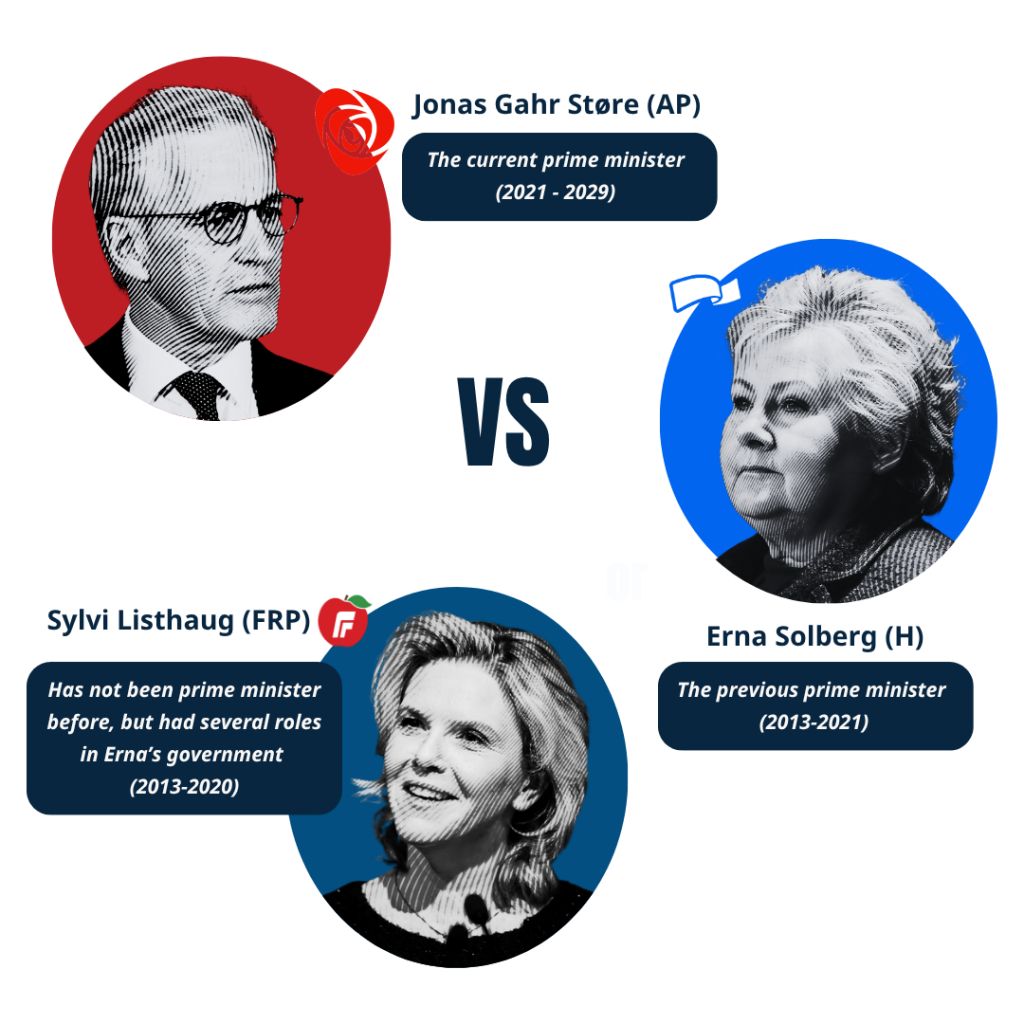
Norway’s Democratic Model
Knowledge about the Storting, the Government, and the political parties is important for everyone who is part of Norwegian society—whether you have the right to vote, are preparing for the Social Studies Test (samfunnskunnskapsprøven), or simply want to better understand daily life and public discourse.
Want to learn even more? Join us at the language café on Wednesday, October 15, for a session on Social Studies! Here, you can discuss these topics and get further guidance in a social and educational environment.
Written by Emilie Nancy Eiken, receptionist and lecturer in religion and social sciences.
Tags:
